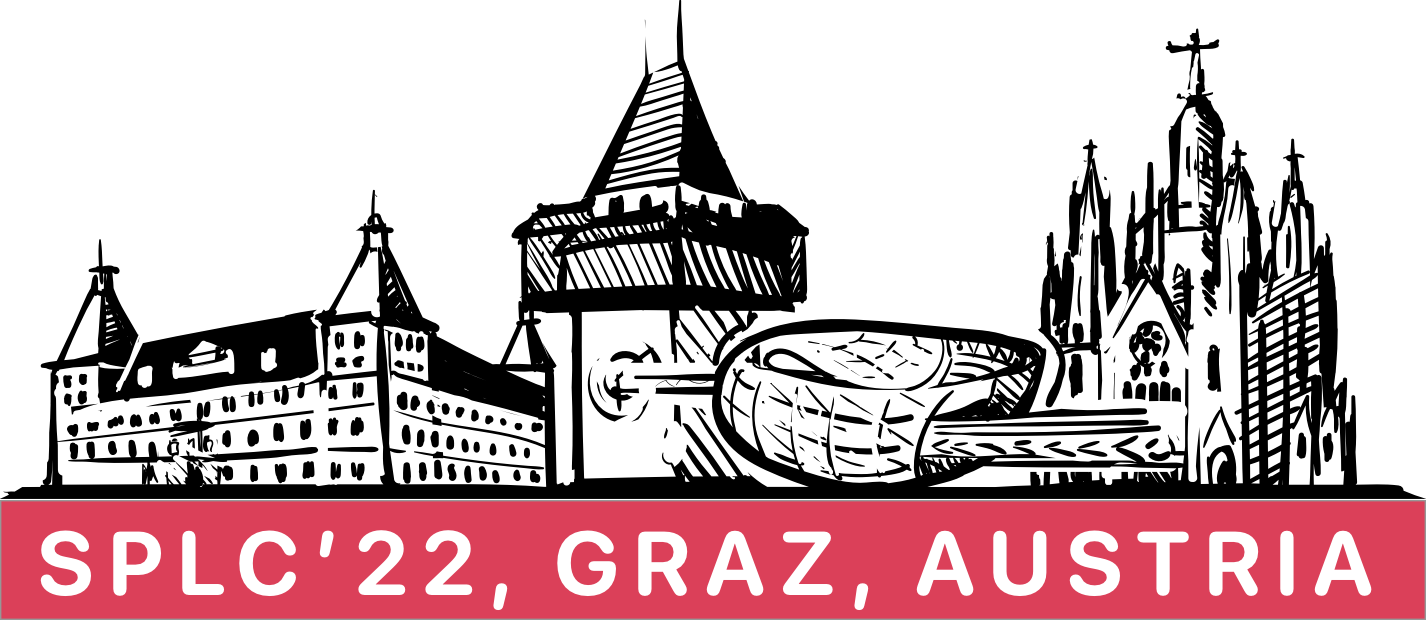Tutorials provide a valuable opportunity for conference participants to expand their product line knowledge and skills. Tutorials may focus on introductory product line topics, such as how to introduce a product line approach into an organization, or on advanced topics that fit the conference’s scope such Tutorials provide a valuable opportunity for conference participants to expand their product line knowledge and skills. Tutorials may focus on introductory product line topics, such as how to introduce a product line approach into an organization, or on advanced topics that fit the conference’s scope such as tools, emergent approaches, methods, and best practices. We also welcome tutorials focusing on cross-disciplinary product line-related topics such as applications of artificial intelligence and machine learning, software ecosystems, domain-specific languages, model-driven engineering, self-adaptive systems, systems of systems and cyber-physical systems. However, for these topics, make sure to clearly explain the relation to product lines. We particularly encourage tutorials that have a practical (tool) aspect to make the presentations more engaging. Authors from previous editions of SPLC are invited to propose tutorials that explain in a practical way how to use their product-line approach. Tutorials that illustrate the combined use of several existing languages/tools/methods to expand each approach’s applicability are also welcome.
Tutorials will be held during the first two days of the conference week in full-day or half-day sessions.
Important Dates (AoE time)
Tutorial submission: May 16, 2022Notification: June 6, 2022Final version of the 1 page description for the proceedings: July 7, 2022- Tutorials: September 13, 2022
Submission/Publishing
A tutorial proposal consists of two pages describing the topic, the plan for conducting the tutorial, and the backgrounds of the presenters and the tutorial:
- The Topic section should include the title, goals, and intended audience of the tutorial (practical vs academic; beginner vs advanced). The topic should be described in detail, emphasizing on its importance and timeliness.
- The Plan section should include: a preliminary schedule of events including estimated times and length of the tutorial (half-day/full-day); a detailed description of what the tutorial will cover; a justification of the tutorial for SPLC 2022; an explanation of how the tutorial will be conducted (lecture, hands-on training or any combination of them); and a link to sample material or notes, especially if the topic is being proposed for the first time.
- The Presenters’ Backgrounds section should include relevant biographical information and summaries of the presenters’ technical presentation and tutorial experience.
- The Tutorial Background section should include a description of where and when the tutorial has been offered previously and any evaluations that were done.
The page limit for tutorial proposals is 2 pages. All authors should use the official ACM Master article template.
Latex users should use the “sigconf” option, so they are recommended to use the template that can be found in “sample-sigconf.tex”. In this way, the following latex code can be placed at the start of the latex document to create a double column layout:
\documentclass[sigconf,review,anonymous]{acmart}
\acmConference[SPLC’22]{26th ACM International Systems and Software Product Lines Conference}{12-16 September, 2022}{Graz, Austria}
Submissions will be reviewed by the tutorial chairs and assisted by the other SPLC track chairs in case of conflicts. Submissions must be sent using EasyChair (https://easychair.org/conferences/?conf=splc2022).
All people giving an accepted tutorial must register and attend SPLC 2022.
A one-page description of all accepted tutorials will be published in the SPLC 2022 conference proceedings. Proceedings of SPLC’22 will be published in the ACM Digital Library.

